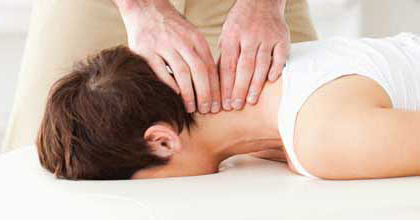
Neck Pain
Neck pain is very common and can affect simple day to day activities such as turning your head and sitting at work or home. Pain is not usually due to any serious disease.
It can be localised or it can spread down across the shoulders. It can sometimes spread into the arm and also cause headaches.
Pins and needles, numbness and weakness in the arm can also be symptoms of a problem relating to the neck. This can be where one of the nerves becomes irritated where it exits the spine. This is called a ‘radiculopathy’.
Anatomy
The neck is made up of 7 bones or vertebrae. In between all but the upper joints are discs. The neck’s job is to hold the weight of your head which weighs about 3 kg, and to allow you to follow where your eyes look.
There are many conditions which can be the cause of neck pain but the most common are:
There are many conditions which can be the cause of neck pain but the most common are:
- Whiplash is a term relating usually to a car accident when then neck moves forward and back suddenly. This is often followed by pain and stiffness but should ease quickly with effective management. For more information, visit http://cks.nice.org.uk/neck-pain-whiplash-injury
- Acute wry neck/torticollis is a sudden onset of neck stiffness and pain. It usually presents first thing one morning on rising, possibly after sleeping in a different or ‘funny’ position. Hands on treatment is very effective at improving symptoms, along with painkillers and time.
- Spondylosis is a word people often hear relating to their neck. This term relates to osteoarthritic (wear and tear) changes at a single joint level in your neck, though it can happen at more than one level.
Work station posture
This is very important to reduce the risk of neck pain or it not resolving. The “ideal” posture places the weight of the head evenly through the neck bones and discs. Neck pain can begin when you have a ‘forward head posture’ or ‘chin poke’ when you sit slumped. This places greater pressure through the joints at the back of the neck (which they don’t like) and also means the muscles at the back of your neck and head have to work very hard to hold your head up.
Contact us


